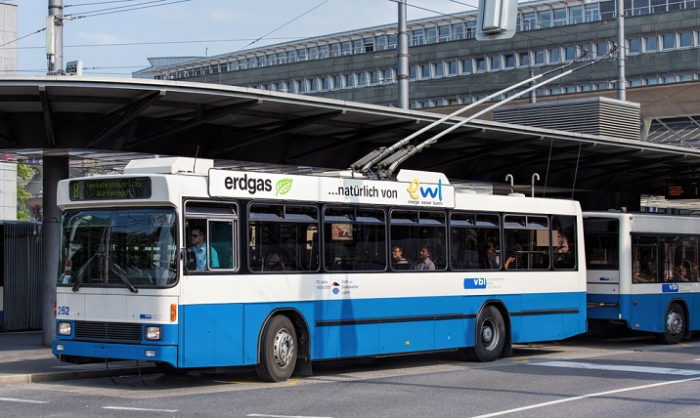
 Data Structure
Data Structure Networking
Networking RDBMS
RDBMS Operating System
Operating System Java
Java MS Excel
MS Excel iOS
iOS HTML
HTML CSS
CSS Android
Android Python
Python C Programming
C Programming C++
C++ C#
C# MongoDB
MongoDB MySQL
MySQL Javascript
Javascript PHP
PHP
- Selected Reading
- UPSC IAS Exams Notes
- Developer's Best Practices
- Questions and Answers
- Effective Resume Writing
- HR Interview Questions
- Computer Glossary
- Who is Who
What is a Trolleybus? – Advantages and Disadvantages
What is a Trolleybus?
A trolleybus is an electric bus that draws its electricity from overhead wires, which are generally suspended from roadside posts, using spring loaded trolley poles. The trolleybus is also known as trolley coach or trackless trolley or trackless tram. The trolleybus is a pneumatic tyre vehicle.

In case of trolleybus, two wires and poles are required to complete the electric circuit. It is fed usually at 600 VDC from the overhead contact wires by means of two collectors. In trolleybus drives, a DC compound motor of output of 50 to 100 kW is usually employed.
The speed control in the trolleybuses is obtained by field weakening method either by providing a resistor in the shunt field or the tapings on series field or diverters with the series field.
In the trolleybus, the foot operated master controllers are used so that driver may have his hands free to steer the vehicle and to apply the handbrakes. Here, one pedal controls the starting and speed control and the second pedal controls the rheostatic and compressed air brakes. In order to avoid damage to the power transmission gear, stabilized rheostatic braking is used. The lighting system used in the trolleybus is the low-voltage DC system which is supplied from a motor-generator set connected in parallel with a battery.
The trolleybuses are usually provided with secondary batteries so that the bus can be operated in case of emergency. The body of the trolleybus is insulated from the earth because of rubber tyres and hence, care must be taken to ensure adequate insulation resistance. The insulation resistance is checked at the end of the day when it is hot and damp.
Advantages of Trolleybus
The advantages of trolleybus include the following −
As the electric motors are more effective than diesel engines in providing torque at start-up. Thus, the trolleybuses are advantageous on hilly routes.
The electric motors used in trolleybuses draw power from a central plant and hence can be overloaded for short periods without damage.
The rubber tyres used in trolleybuses have better adhesion which gives them better hill-climbing capability and braking.
Trolleybuses are electric vehicles; hence they are environment friendly in cities.
Trolleybuses can generate electricity from kinetic energy while braking which is known as regenerative braking.
Trolleybuses are almost silent and do not cause noise pollution.
A trolleybus can accommodate slightly more passengers than an oil engine bus.
Disadvantages of Trolleybus
Trolleybuses have the following disadvantages −
Trolleybuses have unique operating characteristics such as the trolleybus drivers must slow down it at turns and through the switches in the overhead wire system.
Re-routing of the trolleybuses are not usually readily available outside of the downtown areas.
Trolleybuses cannot overtake one another in regular service unless two separate sets of wires with a switch are provided or the buses are equipped with off-wire capability.
The cost of overhead equipment for a trolleybus service would be too large relative to the number of passengers carried and the revenue earned.
Applications of Trolleybus
Due to the high acceleration and braking retardation, the scheduled speed over a given route will be higher than that of the oil engine bus so that fewer trolleybuses are required for operating a given service. Therefore, trolleybuses are used for the inner suburban areas with medium traffic density.

